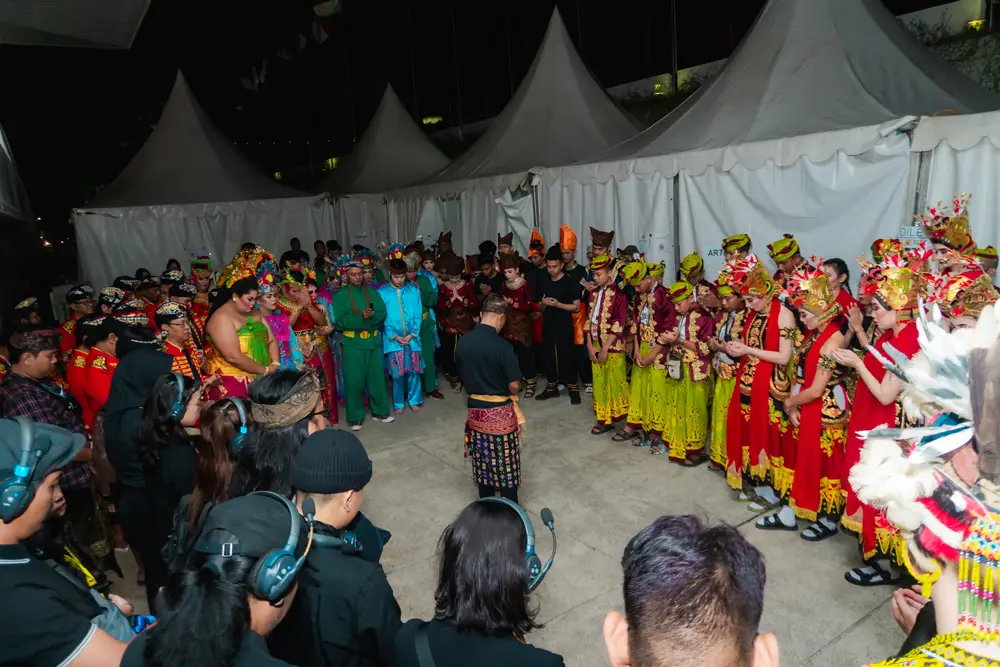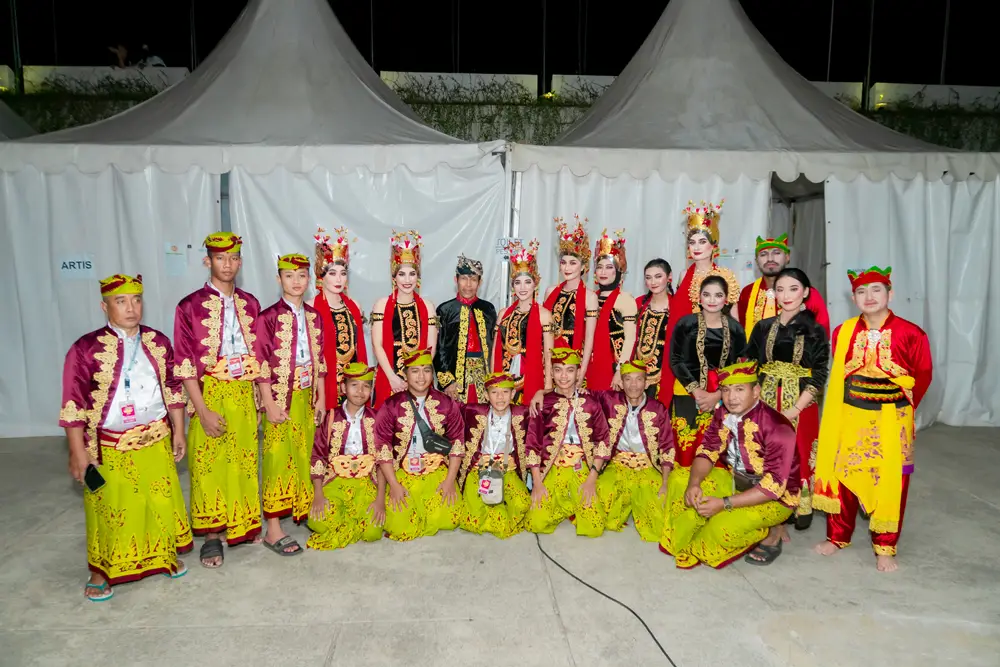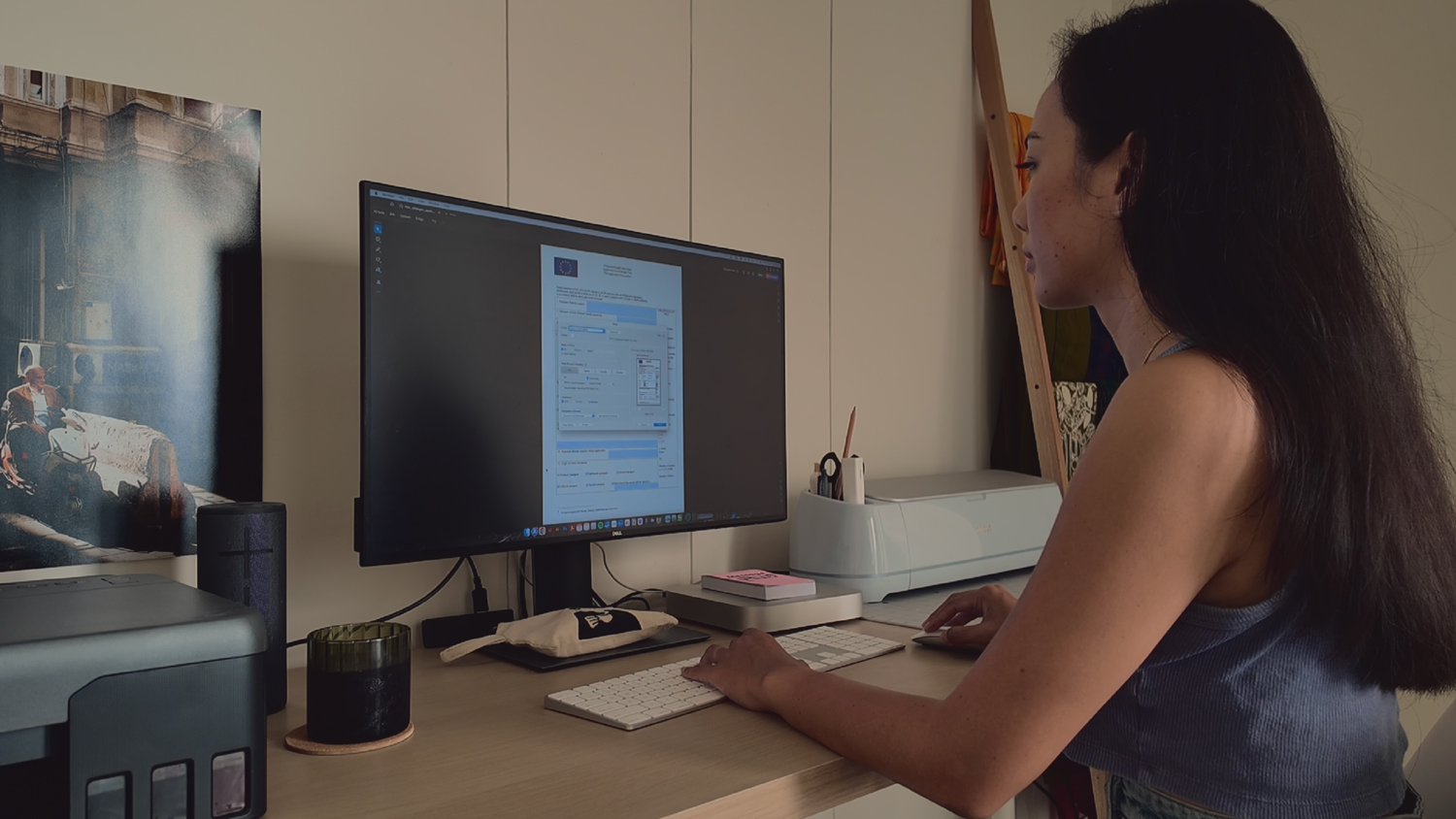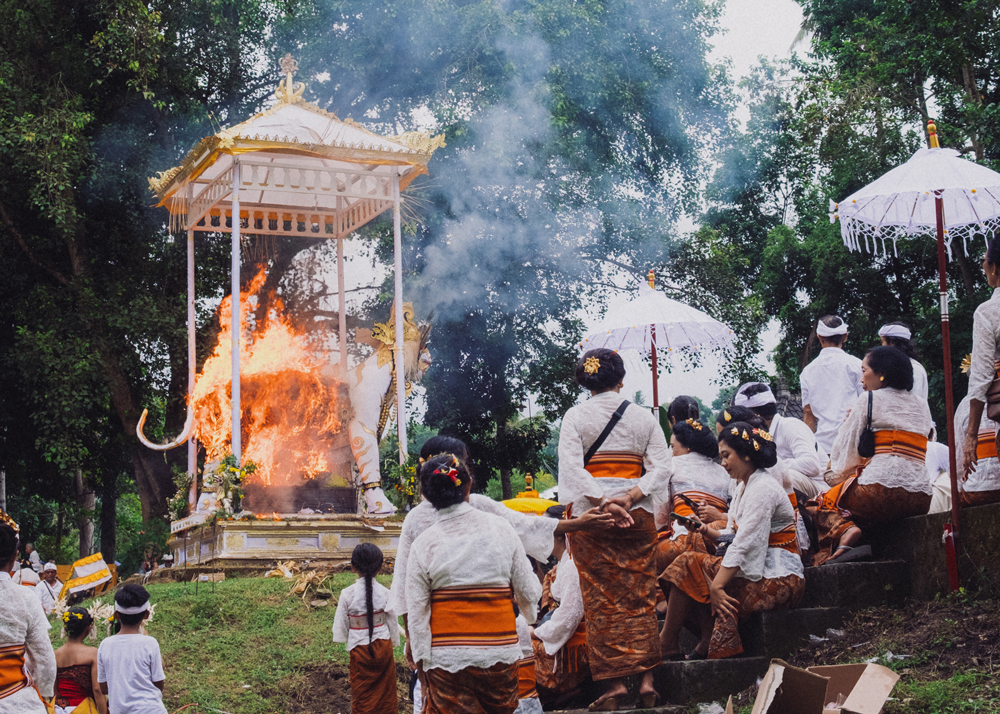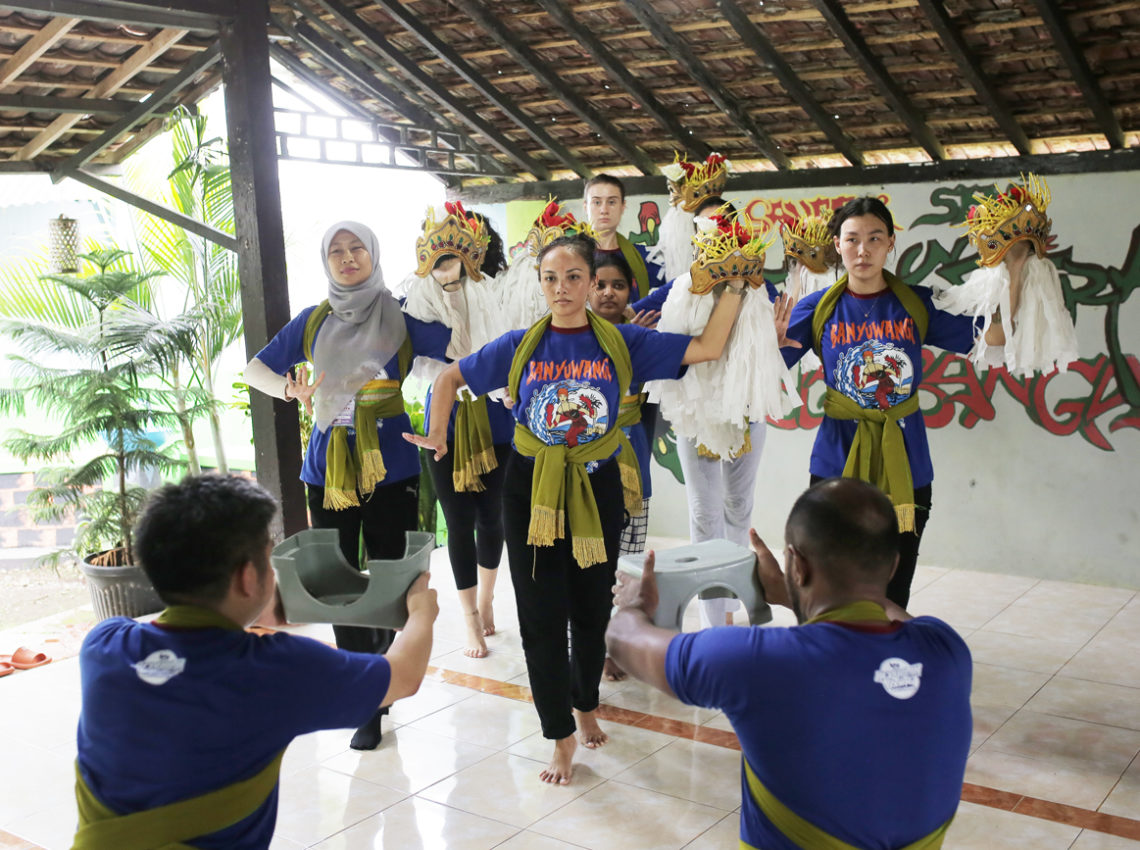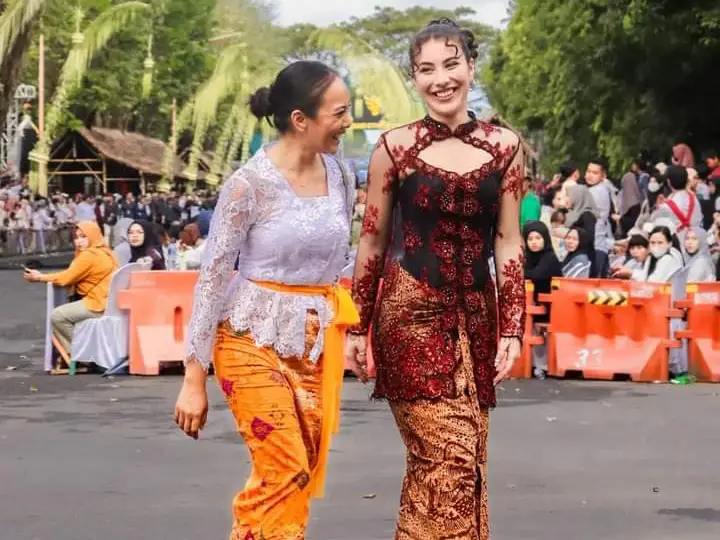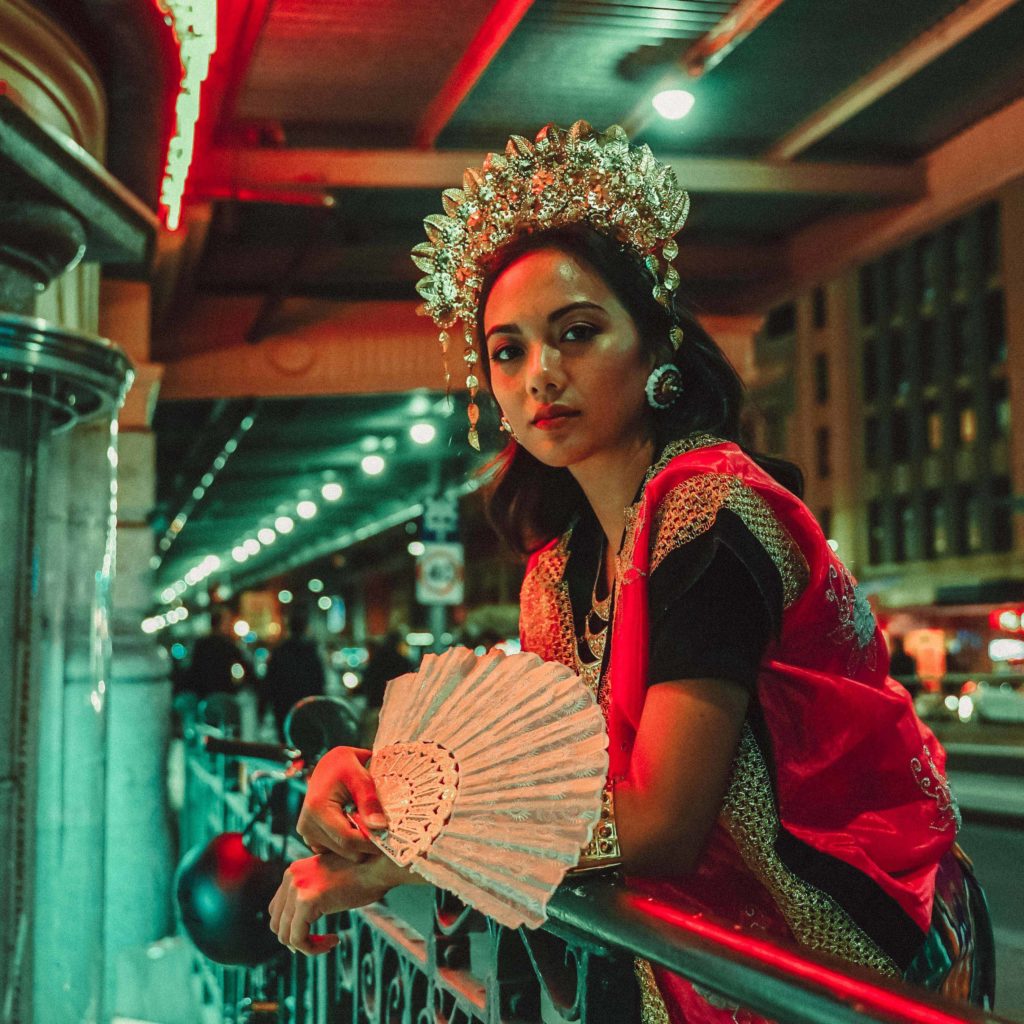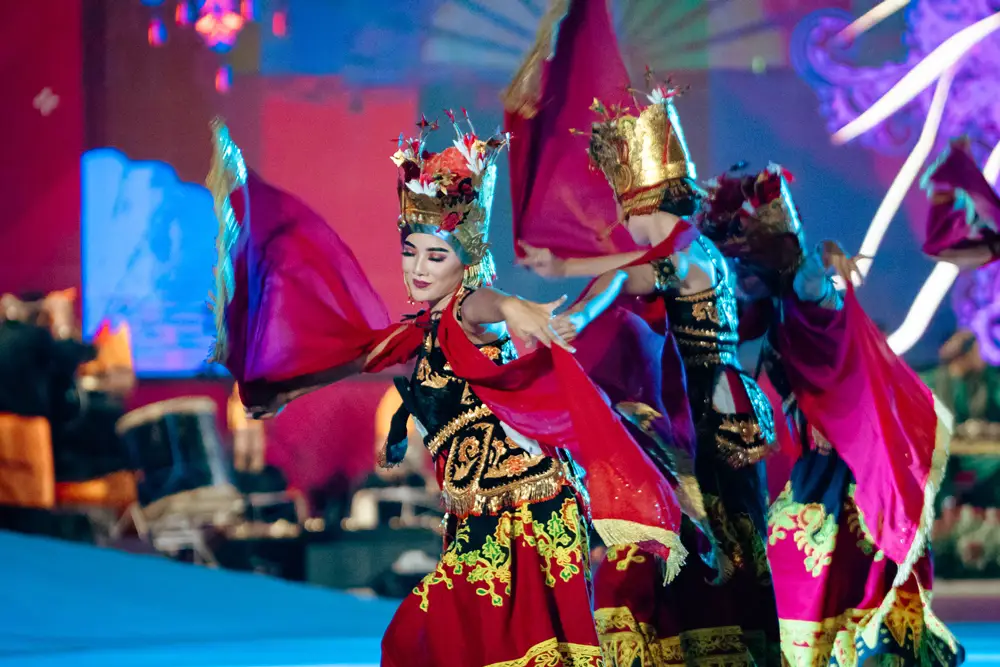
The first time I ever came across Tari Gandrung, I was sitting back in my bedroom in Melbourne watching traditional Indonesian dance videos on YouTube (yes, this is a thing I do) and I saw a dance where thousands of female dancers performed in matching red, black and gold costumes, dancing in unison along a beach in Banyuwangi. Up until that moment, I was oblivious to dances originating from Banyuwangi, so when I saw this dance I was immediately drawn to it and wanted — no, needed — to learn it.
Learning Tari Gandrung Online vs In-Person
In 2021, when I learned that the Indonesian Arts & Culture Scholarship program had opened offering the chance to learn dance from Banyuwangi, I quickly jumped at the opportunity. During my interview with the Indonesian Consulate in Melbourne, I specifically expressed my interest to be placed in Banyuwangi with the hope of learning Tari Gandrung. Fortunately, I was accepted into the program and assigned to Sanggar Lang Lang Buana in Banyuwangi. However, because the program was conducted online that year, they focused on teaching a dance called Tari Gebyar Barong, a dance more suitable to be taught virtually (read more about that year here).
After wrapping up the program that year, although I was excited about the new dance I had just learned, my curiosity and eagerness to learn Tari Gandrung persisted. With Mama Ning’s approval from Sanggar Lestari Melbourne, the Indonesian dance school I attended at the time, I decided to take on the challenge of self-learning this dance. Turning to YouTube, I began looking for high-quality videos providing clear demonstrations of Tari Gandrung’s movements, allowing me to carefully study each step.
Throughout my search, I came across multiple variations of Tari Gandrung, making it challenging to understand the significance or differences in each. However, after a few weeks of dedicated research and with the advice of Mama Ning, I settled on learning Tari Jejer Jaran Dawuk. This led to a performance with my friend Asti at the Buddha’s Day Multicultural Event in Melbourne. It’s worth mentioning that the costume we wore that day was a combination of Banyuwangi and central Java elements, as we improvised with what was available to us at the time.
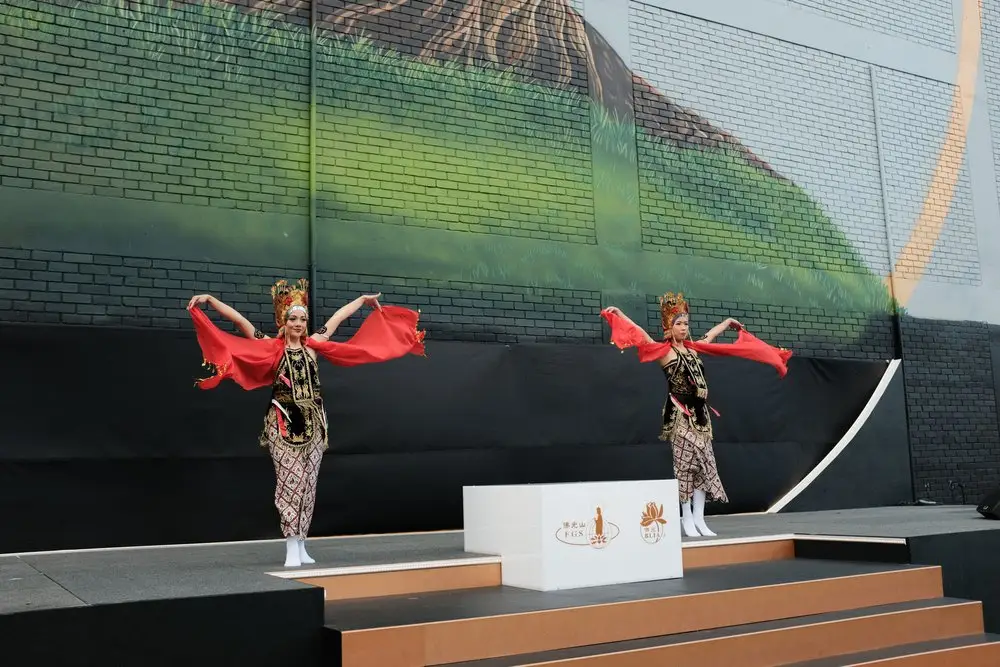
In 2023, I had the incredible chance to rejoin Sanggar Lang Lang Buana in Banyuwangi through the IACS program. However, this time, the opportunity was even more exciting as it was an in-person learning experience, specifically focusing on Tari Gandrung. It felt like a dream come true, so I jumped at the opportunity—I was so invested that I seriously thought about leaving my job just to be part of it. Despite joining the program a few weeks later than others, I quickly grasped the dance moves. My prior experience learning Tari Gebyar Barong virtually and teaching myself Tari Jejer Jaran Dawuk via YouTube gave me a head start in understanding some of the movements. However, the hands-on experience of learning in person was invaluable, allowing me to grasp the specifics of each move without the constraints of a screen.
During my time at Sanggar Lang Lang Buana, I had the opportunity to learn Tari Paju Gandrung, which is another rendition of Tari Gandrung. This particular dance features a segment that involves a partner dance known as Paju, also referred to as Maju or Pemaju. In this segment, a male dancer joins the Gandrung dancer in the performance. Given that our group included two male scholarship awardees, this option proved to be ideal, allowing us to seamlessly incorporate everyone into the dance.
A little bit about Tari Gandrung
Tari Gandrung is a widely recognized dance in Banyuwangi and is proudly showcased throughout the town to welcome guests at events or serve as entertainment during various occasions. Upon my arrival in Banyuwangi, it became evident that Gandrung dancers were integral to the identity of the region. Statues, paintings, and carvings of Gandrung Dancers appeared at every corner. I even came across a building shaped like an Omprog, the distinctive headpiece worn by Gandrung dancers, further emphasizing the cultural significance of these performers in Banyuwangi.
The history of the dance dates back to 1800s and was originally performed by a man named Marsan who would perform with kendang players around villages to collect rice which he would then distribute to those in need. It wasn’t until Marsan passed away in 1840 that the dance was performed for the first time by a young female by the name of Semi. You can read more about the history of Gandrung Dance here.
Learning Tari Gandrung
My Gandrung journey with Lang Lang Buana started in early July. Being a late addition to the group, I had missed a few weeks of the program. Upon my arrival, the group was already well-versed in the choreography of Tari Gandrung, requiring only fine-tuning of movements and the incorporation of the Paju segment into the dance. Within a week of immersing myself in learning Tari Paju Gandrung, Lang Lang Buana arranged for us to perform live on stage at the Banyuwangi Ethno Carnival (BEC), an annual fashion-themed festival hosted by the Regency of Banyuwangi.
This would be my debut performing a traditional dance in Indonesia, marking off a major point on my bucket list. Naturally, there was a bit of pressure on me to quickly catch up with the rest of the group and nail the choreography.

My first performance in Indonesia
The day we had all been waiting for finally arrived – our big stage performance. I was bubbling with excitement for my first-ever performance in Indonesia. Since my arrival, everything had been a whirlwind, and the adrenaline rush was real. Despite our performance being scheduled for 7:30pm, the preparations started early in the morning. Since this was the first time we were performing with full make up and dance costumes, Lang Lang Buana wanted to take the opportunity to also turn the day into a photoshoot day, to send images of us back to the Ministry of Foreign Affairs as a report of our progress.
The day got even crazier when the weather decided to take a turn for the worst, bringing in a full downpour from early morning. As we were getting ready, the Lang Lang Buana team had to think on their feet to relocate our photoshoot. Originally planned for a beautiful garden, the rain forced a change of plans. We ended up doing the photoshoot in the small area of our homestay. Not the dream setting, but it got the job done.
When the rain began to subside, we made our way to Gesibu, where we would be performing Tari Paju Gandrung in front of the Regent of Banyuwangi, Ipuk Fiestiandani and the local community. However, upon our arrival, the rain resumed, making us uncertain about the feasibility of the outdoor event. After another break in the rain, we stepped onto the stage for a quick blocking session to determine our positions during the performance. We then patiently waited backstage in our costumes for hours. Despite the mix of nerves and frustration setting in, we understood the situation was beyond anyone’s control so we waited as patiently as possible for the show to commence, unsure if the show would begin at all.
Although the rain continued to pour, the show eventually started later than scheduled. Nerves started to set in again, so I did my best to smile and hype the team up to keep the spirits high for our performance. As we headed side stage, the rain had thankfully calmed down to a trickle, however the stage floor was completely wet. I was so afraid of slipping but I had to push those thoughts to the back of my mind, to keep my energy positive. As soon as the music started, I got into my role, my nerves disappeared and suddenly we were off! And there it was – My first performance in Indonesia, dancing in the rain… with wet socks. Not as romantic as the movies make it out to be, however it still ended up being a unique and beautiful experience.
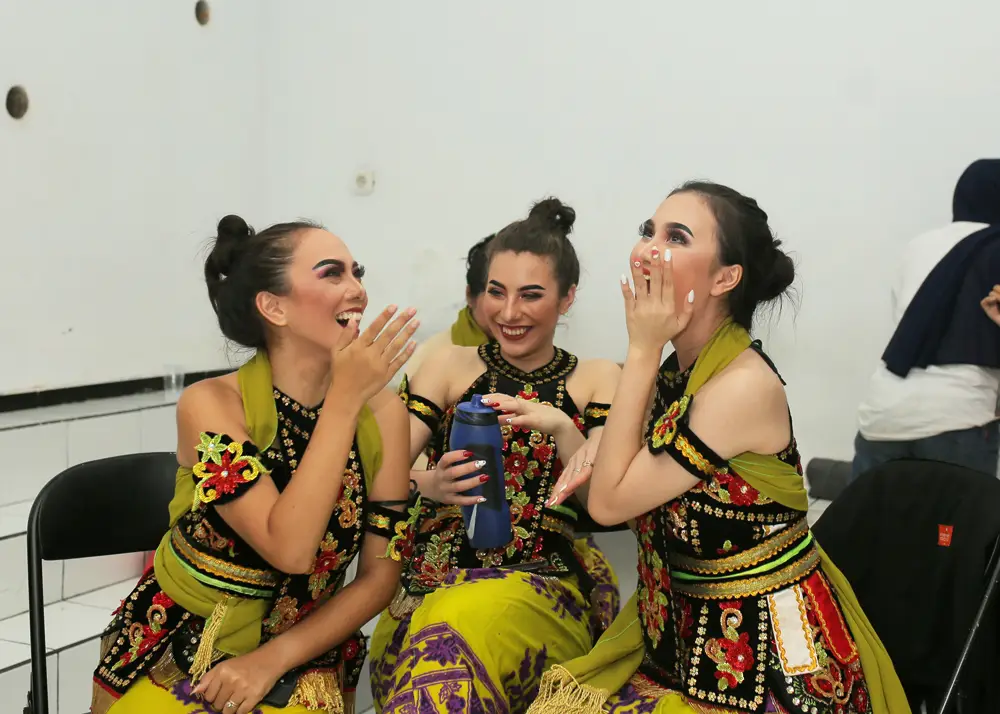
preparing for Indonesia Channel in Jakarta
For the next month, we dedicated ourselves to refining our performance of Tari Paju Gandrung in preparation for the even grander stage awaiting us in Jakarta. A month after our showcase at the Banyuwangi Ethno Carnival, our dance had undergone significant transformations. The music underwent countless changes, and choreography adjustments were made, introducing more advanced moves in some areas and simplifying others. However, once we arrived in Jakarta in August, our dance was back to square one as EkosDance Company envisioned more ambitious choreography for the size of the stage at Lapangan Banteng. They believed we needed greater movement and shifts across the stage to make the performance more impactful.
So, with just one week remaining until the final Indonesia Channel performance, we found ourselves reworking our dance to suit the stage’s size. It felt chaotic, and the uncertainty of whether we could make it work loomed over us. Fortunately, we had an exceptional team supporting us. Ekos Dance Company provided guidance, and Lang Lang Buana rearranged the music once again to allow us enough time to move seamlessly from one side of the stage to the other. It was an incredible team effort, and by the week’s end, we had a performance that we could take pride in.
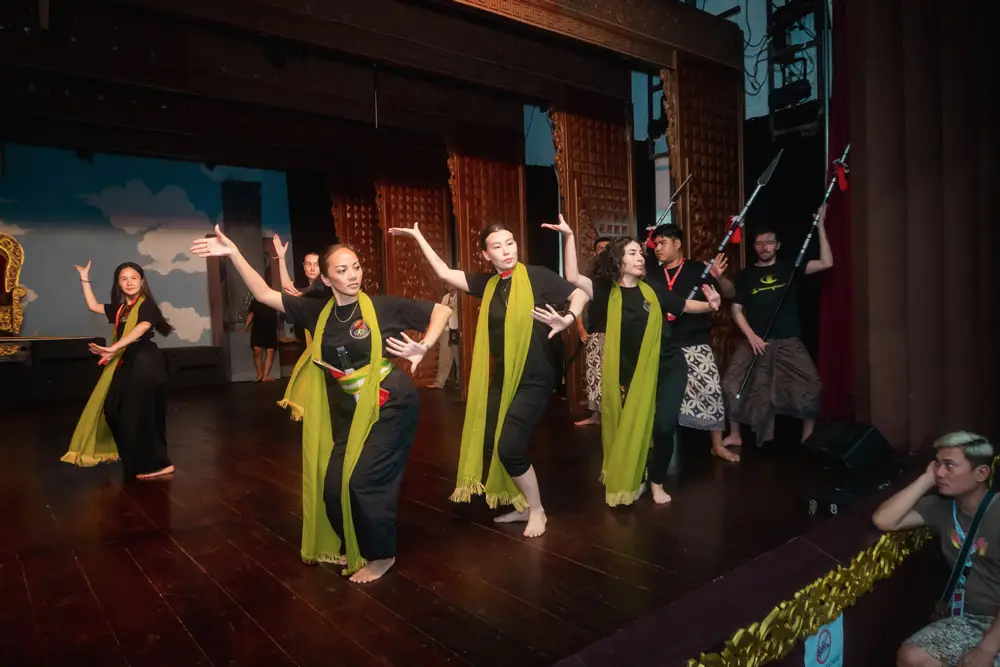
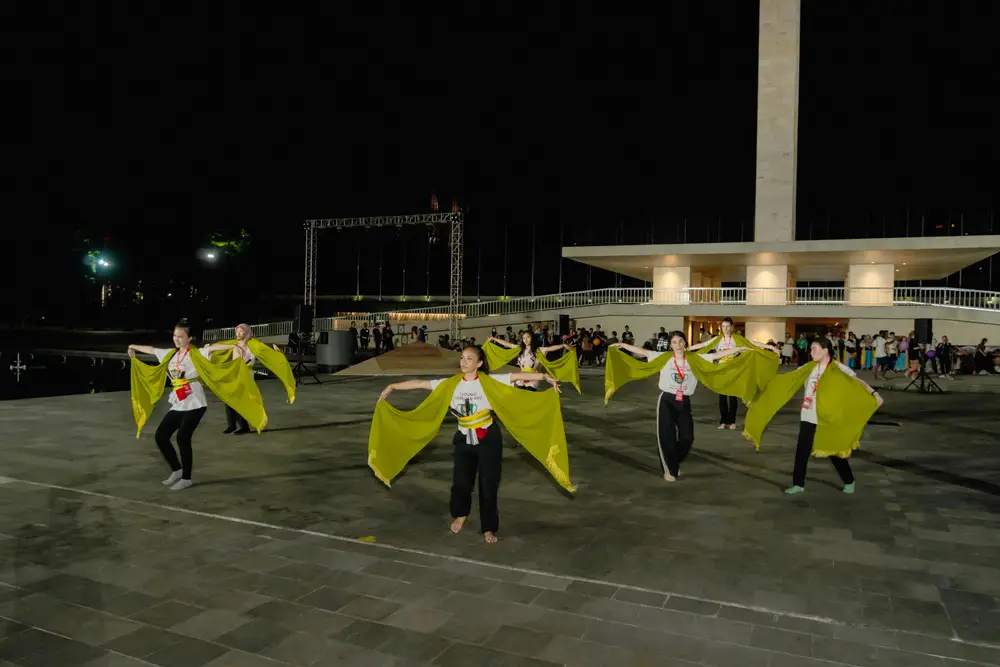
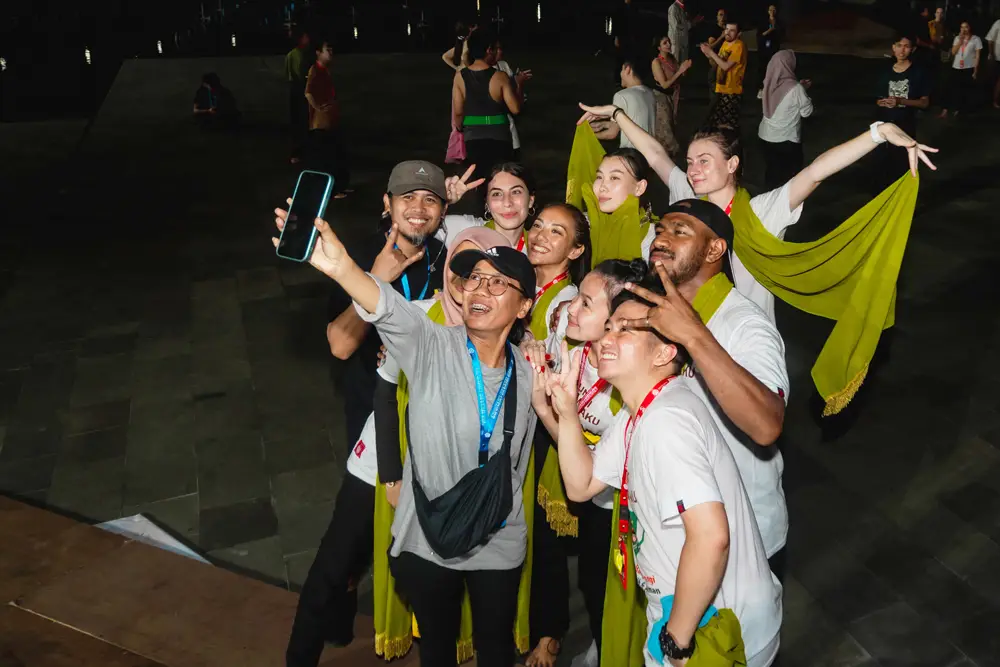
Indonesia Channel 2023
The day of the final Indonesia Channel performance at Lapangan Banteng in Jakarta had finally arrived. We began getting ready from midday, preparing to head to the venue for the last time. Despite the mixed emotions of tiredness from numerous late-night rehearsals, a sense of sadness that our time together was coming to an end, and nerves about avoiding mistakes after so many last-minute changes to the dance, I was still excited to finally showcase what I had worked hard on over the past month.
In the end, the performance was a success. In the blink of an eye, weeks of rehearsing day and night had come to an end and all of our hard work was poured out onto the stage. I’m thankful for ‘The Dream Team’. We all worked together and pulled together what felt like an impossible task at the time into a beautiful show that I will cherish forever.

